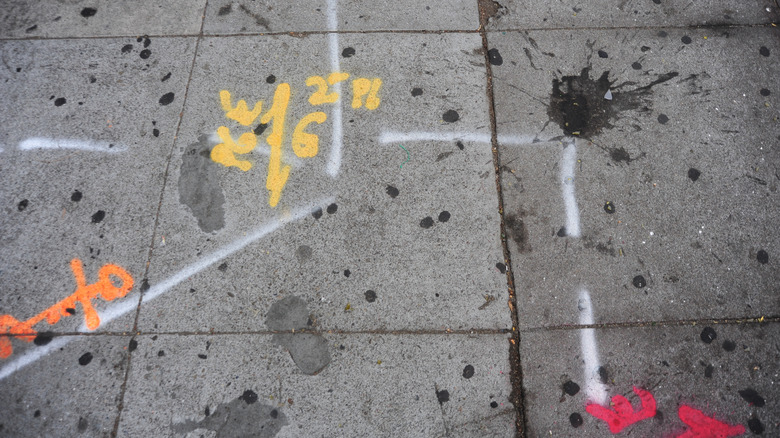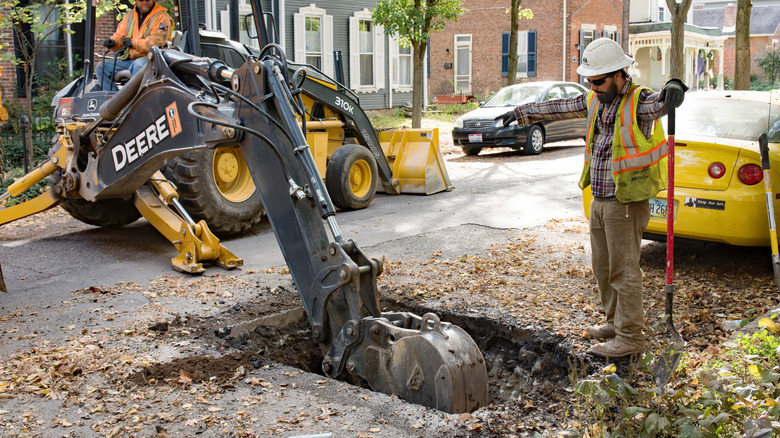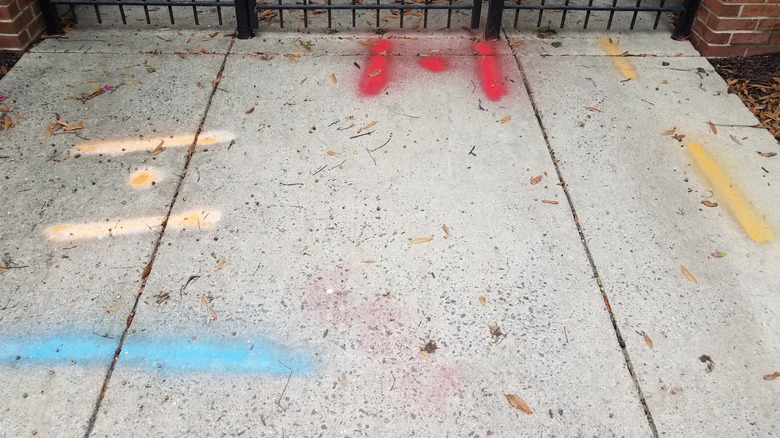Ever Wonder Why Some Sidewalks Near Your Home Get Marked With Yellow Paint?
Construction or utility maintenance is nothing new when you live in a neighborhood or city. And with that work comes the interesting multi-colored painted markings that show up on your sidewalks and pavements overnight when these projects begin. While it may feel like gibberish to homeowners and residents, these painted markings have distinct and very important meanings for the workers on the job. One of the most important markings that utilities professional will always heed are those made with yellow paint.
Yellow paint on sidewalks is indicative of infrastructure buried underground that holds steam, petroleum, gas, oil, or gaseous materials. To avoid damaging these systems, construction or utility workers will outline where the infrastructure is located beneath the ground. In the worst-case scenario, accidentally hitting one of these systems could result in severe damage — and even lead to causalities. In the best-case scenario, damaging an underground gas or oil line could contribute to annoying delays to construction, which are made all the more aggravating if you're the one footing the bill in a home renovation project or building a structure on your own property. The practice of color tagging during public works, particularly paying attention to gas lines in yellow, has an unfortunate history, but from it, best practices and protocols have been formulated to keep our homes and ourselves safe.
Why do utility companies use painted tags and colors?
On a typical southern Californian summer day in 1976, public works professionals were excavating Venice Boulevard in Culver City. The street was due for a facelift and widening to accommodate ever-growing traffic. However, tragedy struck during their dig when workers cut into a petroleum pipeline that was under the street. Pressurized gas tore the pipeline open and a massive explosion destroyed the structures situated on that stretch of Venice Boulevard. Residences and buildings alike caught fire and dozens of people were injured and killed. This devastating tragedy prompted a number of mitigating measures to be put in place during construction and public works.
Months later, the DigAlert system was created. Construction crews were mandated to locate utility lines and mark them out prior to excavation, communicating their project's intent so that everyone involved in the vicinity would be on the same page. The Uniform Color Codes from the American Public Works Association followed close thereafter, outlining a number of marking colors that would indicate specific utilities structures that existed in the work area. This color system was codified by the American Standards Institute with Safety Color Code Z535. After combined efforts to better safety protocols, now the industry abides by national standards as communicated by these paint marks, flags, or other markers.
What do other colors mean?
The American Public Works Association developed a comprehensive color system to avoid any other misfortunes or tragedies as was seen in Culver City. For instance, red markings on the pavement outside of someone's home is an indicator that electrical lines or cables, including conduit and lighting cables, exist subterraneous in the area. During internet installations as well, you may notice orange markings used on the pavement. This shows where any telecommunication lines, like phone cables or alarm lines, may live. Green, blue, and purple markings all indicate some sort of water or sewer infrastructure underground as well.
If there's a large number of public works occurring around your home, and a host of these markings crop up in front of the house, don't get too worried about the paint. The markings are not permanent and are meant to fade and wash away with time. Though it may be a minor eye sore for a short while, its presence assures workers that they are communicating effectively, and thus safely. Utilizing these markers are not just reserved for professional workers either; if you are planning to do any projects around the exterior of your home that involve digging into the ground, including doing landscaping yourself, homeowners all across the country can call 811 to have the underground utilities, like gas lines, marked out at no cost. The cardinal rule for all of your home projects should always be "safety first," and getting your own yellow markings is a show of just that.


